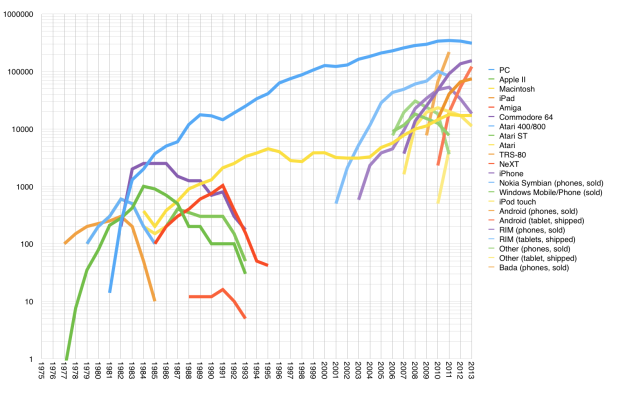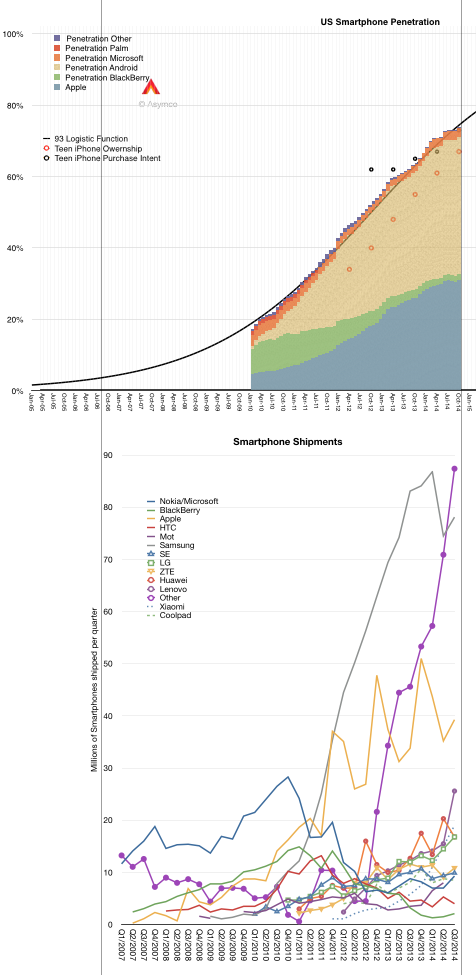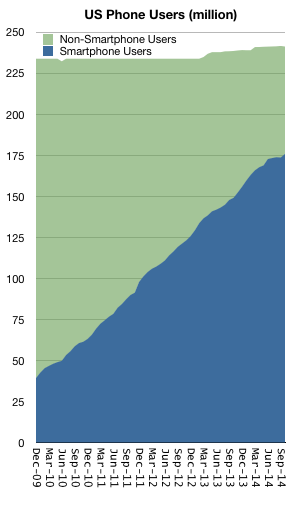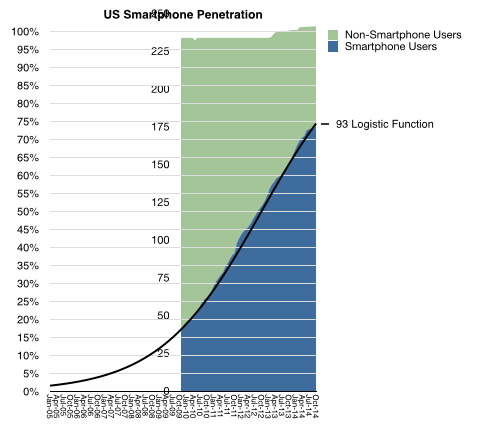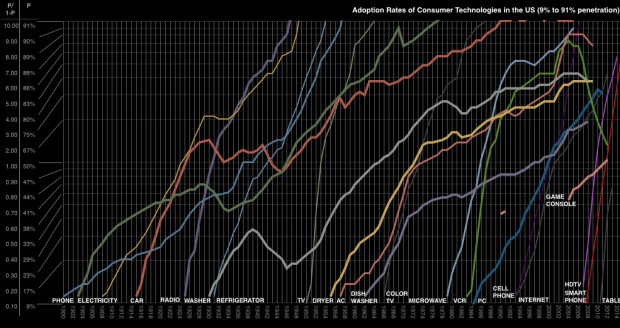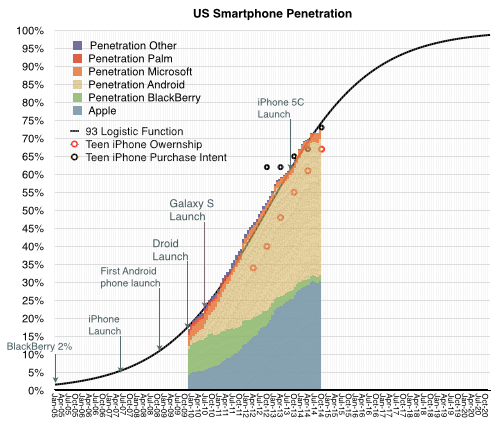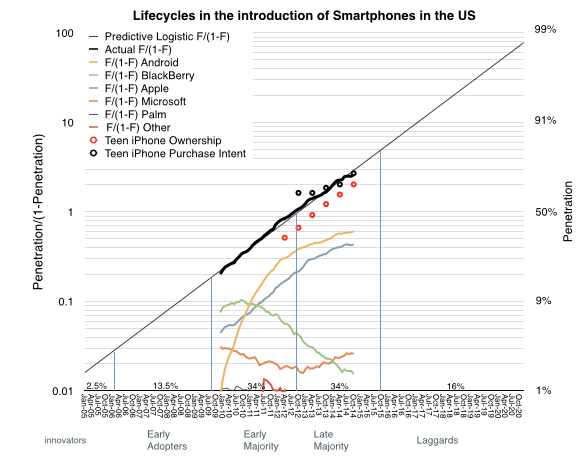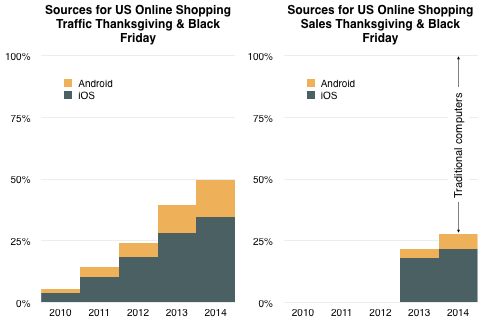When the Apple Watch will begin sales, there will have been dozens of “smart watches” released. At CES this week at least 56 “wearables” were on display. One could be forgiven for thinking that Apple’s Watch will compete with at least that many alternatives. Those alternatives don’t even include the entire existing mechanical and electronic watch market, which, surely, is also filled with competitors.
When analyzing competition, it’s easy to get caught up in one-on-one competitive comparisons, each posited as a decisive life-or-death battle. Consider the list of competitors that Apple has been declared as being in a death-match with:
- Real Networks. Yes, there was a time when Apple’s survival depended on success vs. alternative media encoding technologies.
- Adobe. Remember Flash? No Flash support meant that Apple’s fledgling phone would fail.
- “The Music Industry”. Unhappy partners could surely shut down the iTunes music store, and their insistence on DRM would surely cripple the experience.
- IBM. In nearly every aspect, their business/strategy/inclination and glimmer of intent was an existential threat the Apple.
- Microsoft. In nearly every aspect, their business/strategy/inclination and glimmer of intent was an existential threat the Apple.
- Google. In nearly every aspect, their business/strategy/inclination and glimmer of intent is an existential threat the Apple.
- Samsung. Obviously. But not just phones or tablets. They have control over key components that Apple used in many of its products, before the iPhone even.
- Palm/BlackBerry/Nokia/HTC/Huawei/Xiaomi et.al. Every phone maker (and every phone) was/is an existential threat to Apple.
- Dell/HP/Asus/Lenovo et. al. Every PC maker was a threat to Apple. Some of them made MP3 players. Some of them make tablets.
- Amazon. Obviously. Not only as an iTunes killer but as a device disruptor. They are working on drones, after all.
- Sony. Remember them? No longer a PC maker but they moved in many circles Apple moved in. While we’re at it, add all the consumer electronics companies in Japan.
- Dropbox. “If Apple can’t do iCloud right, they’re doomed”.
This is a very short list (feel free to suggest more) and it becomes clear that the total count of competitors that Apple has to counter “or else” seems to number in the thousands. Practically every hardware, software and service company is positioned as an “Apple Killer”. in fact, the more interesting question might be which companies are not competing with Apple.
Another interesting question relates to why there is no transitive property of competition. I.e. if company A competes with Apple and Apple competes with company B then it does not follow that company A competes with company B.
To wit, whereas HTC competes with Apple and so does Dropbox, it does not follow that HTC competes with Dropbox. So it’s entirely possible that it’s axiomatic that
“Most companies compete with Apple but few of them compete with each other”.
Recognizing a pattern, one could build a model of the technology world where Apple is the focus of all competitive efforts. But this starts to sound absurd.
Indeed, the flaw in the logic is that these competitive pairings are based on the overlap of features of products/services being offered. The features become the attributes of a product which supposedly defines their competitive power. But this is false for the same reason that the attributes of a buyer do not determine their buying behavior. Buyer attributes1 are easy to measure and they may correlate to purchasing behavior but they don’t cause it.
Similarly, product or company attributes are easy to measure and they may correlate to competitive behavior but they don’t cause the substitution of a purchase.
Therefore, appealing to Apple to change its strategy, operations or even its core beliefs in response to a competitor’s behavior is deeply misguided. The cause of success and failure in the marketplace is based on being hired by the customer to get a job done. Once hired, the chances are that the trust is secured and the relationship continues even if alternatives are available. There is comfort in the knowledge of whom you’re working with.
This aspect of trusted relationship between the buyer and the product and the interweaving of ‘brand’ (aka intentions) of the hired is the root of loyalty. Of course, loyalties can be betrayed and trust can be lost. But that implies that the primary responsibility of the manager is the creation and preservation of trust. When seen in this light, an alternative axiom becomes clear:
“Great companies don’t have any competition.”
Great companies are “monopolists of customer trust” and are unaffected by alternatives. They are positioned on and nailing the job their products and services are hired for. The alternatives must not only duplicate the exact job (which they almost never do), but they must also overcome the switching costs.
Remember this when analyzing the impact of yet another competitor and considering the “Apple must fix/do X or else” assertions.
- E.g. demographic, sociographic [↩]

